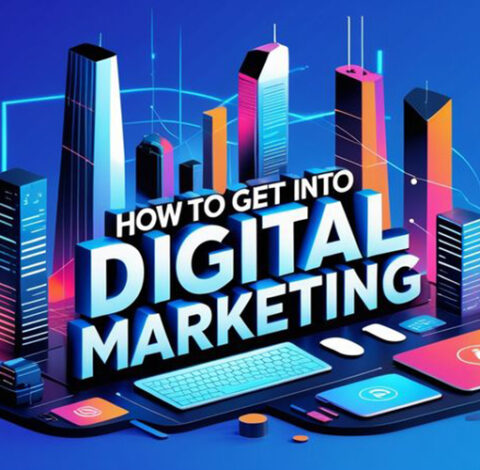
Mastering the Art of Balance: Integrating Technology and Humanity in Modern Business
In the ever evolving landscape of modern business, the quest for efficiency and innovation often leads organizations towards embracing advanced technologies. From AIdriven customer service bots to sophisticated analytics tools, the allure of automation is undeniable. However, amidst this technological revolution, one critical aspect remains paramount: the human touch. This delicate balance between leveraging technology and preserving the essence of human interaction is the cornerstone of building enduring relationships with customers and carving out a distinctive place in the marketplace.
The Power of Human Connection in a Digital World
The digital transformation has brought about a new era of convenience and speed, largely powered by automation and artificial intelligence. Yet, beneath the surface of these technological marvels lies a fundamental truth: the human element continues to be the linchpin of effective business practices. A study by Cogito underscores this reality, revealing that despite the proliferation of digital interfaces, a significant majority of consumers prefer human interaction over automated responses for customer support. This preference extends beyond mere convenience, as it reflects a deeper desire for authenticity and personalized attention—a trait that technology, by its nature, struggles to replicate.
Navigating the Path Between Tech and Humanity
The temptation to lean heavily on technology, using it as a shield against direct human engagement, is understandable. After all, technology promises efficiency, cost savings, and scalability. However, this approach risks undermining the very foundation upon which successful businesses are built—their ability to forge genuine connections with their customers. The challenge, therefore, lies in finding the right equilibrium—integrating technology into business operations without sacrificing the warmth and personalization that characterize human interactions.
Strategies for Achieving Balance
1. Equalize the HumantoTech Ratio: Embrace a balanced approach to incorporating technology into your business model. This means ensuring that every technological advancement serves to enhance, rather than replace, human interaction. By doing so, you can meet the demands of efficiency and innovation while simultaneously nurturing the human connections that define your brand.
2. Position Technology as a Supporting Actor: View technology as a tool designed to amplify human capabilities, rather than as a replacement for them. This perspective shifts the focus from technology as the primary driver of business operations to its role as an enabler, facilitating smoother and more efficient human interactions.
3. Invest in Interpersonal Skills and Empathy: Recognize the importance of developing your team’s interpersonal skills and empathy. In an era where technology dominates the forefront, the ability to communicate effectively and empathetically with customers stands out as a unique selling proposition. Investing in your team’s soft skills ensures that they remain the face of your brand, capable of delivering the personalized experiences that differentiate you from competitors.
Enhancing Your SEO Marketing Strategy
In the digital realm, visibility and reach are paramount. An effective SEO marketing strategy is crucial for attracting and retaining audiences. Here are eight key elements to consider for maximizing your SEO potential:
1. Targeted LongTail Keywords: Focus on longtail keywords that precisely capture the essence of your brand and offerings. These keywords are more specific and less competitive, making them ideal for driving targeted traffic to your site.
2. Quality Content: Develop in depth, high quality content that provides real value to your audience. This approach not only attracts visitors but also encourages them to engage with your content, thereby improving your site’s dwell time and reducing bounce rates.
3. Website Performance: Ensure your website loads quickly. Slow load times can frustrate users and negatively impact your SEO rankings. Optimizing your site’s performance is a critical step in enhancing user experience and search engine visibility.
4. UserCentric Design: Prioritize a design that is intuitive and user friendly. A well designed site facilitates navigation and encourages users to explore, thereby increasing engagement and time spent onsite.
5. Mobile Responsiveness: With the increasing prevalence of mobile browsing, it’s essential that your website is optimized for mobile devices. Responsive design ensures that your site looks and functions optimally across various screen sizes, enhancing accessibility and user experience.
6. Voice Search Optimization: As voice assistants become more prevalent, optimizing your site for voice searches can significantly boost your visibility. Incorporating natural language processing and understanding into your SEO strategy can help your site appear in voice search results.
7. Local SEO: For businesses with a physical presence, local SEO strategies are vital. Optimizing your site for local search terms can improve your visibility among local customers, driving foot traffic and enhancing your online reputation.
8. SEO Analytics: Utilize SEO analytics tools to monitor your site’s performance and identify areas for improvement. Insights gained from analytics can guide your SEO strategy, enabling you to refine your approach based on actual performance data.
Conclusion
In the digital age, striking the right balance between technology and humanity is more crucial than ever. By focusing on human centric approaches to business and leveraging technology as a supportive tool, brands can cultivate deep, meaningful relationships with their customers. Additionally, an effective SEO strategy, grounded in quality content, user experience, and targeted keyword optimization, can propel your brand to the forefront of online search results. Together, these strategies form the backbone of a successful digital marketing campaign, ensuring that your brand not only thrives in the current digital landscape but also remains resilient and adaptable in the face of ongoing technological advancements.






















